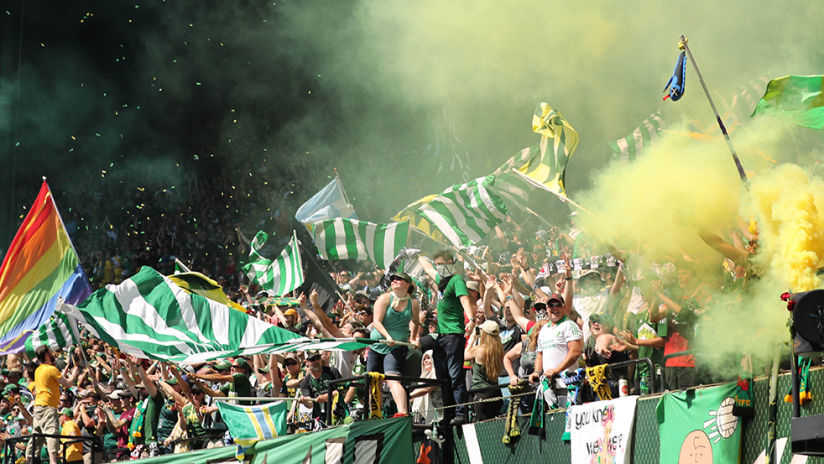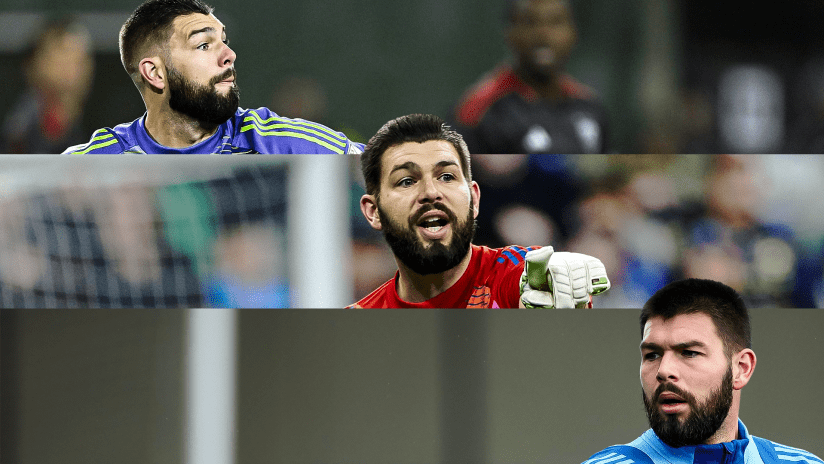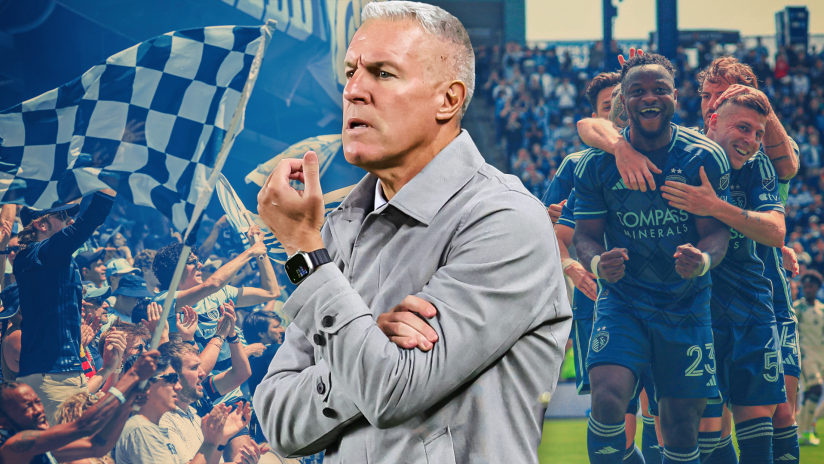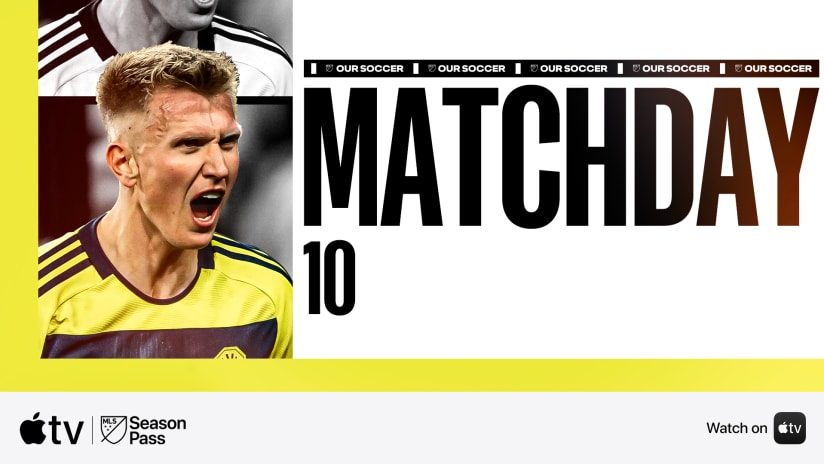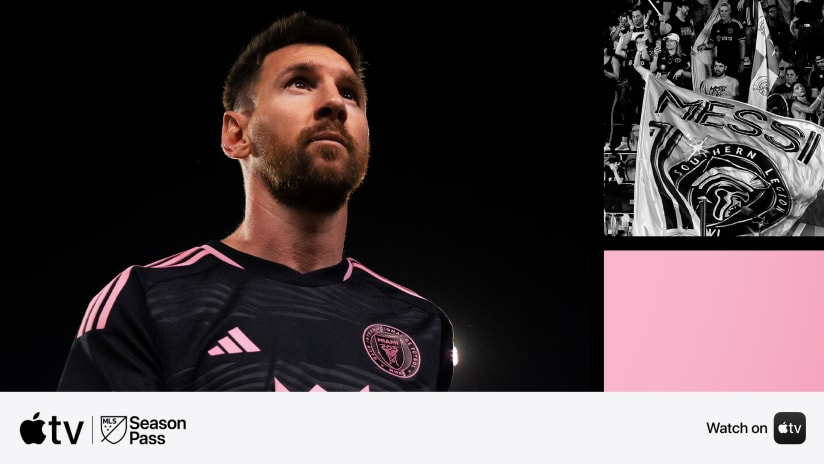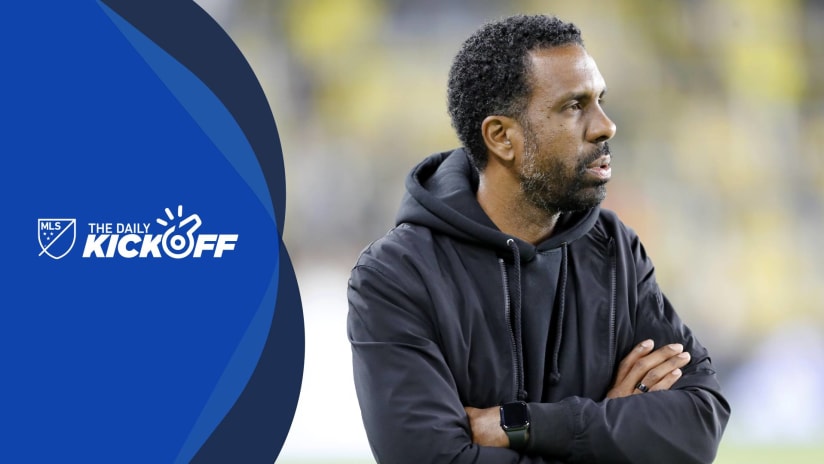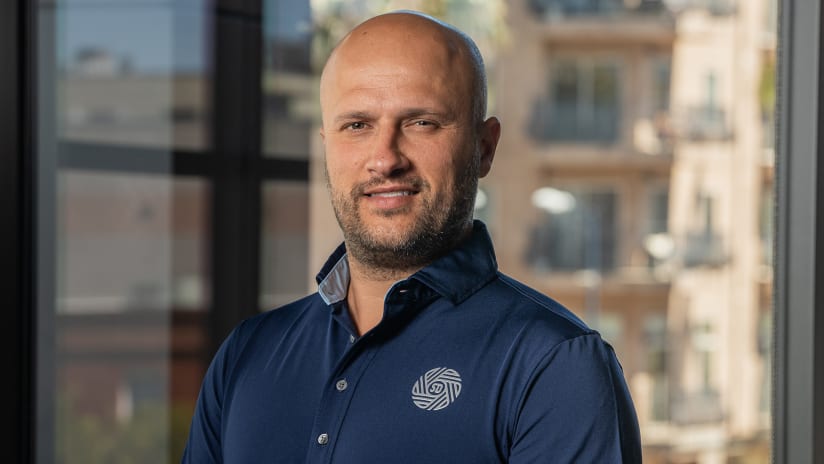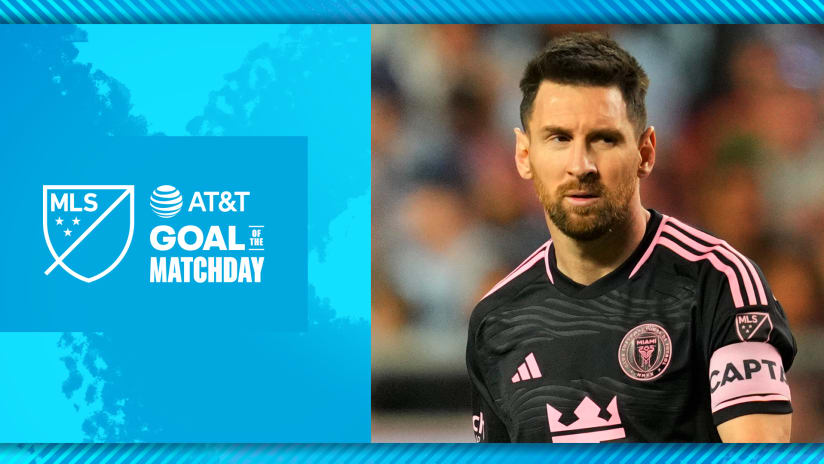On Saturday night, after a six-month hiatus, one of North American soccer’s greatest spectacles will finally return.
Portland Timbers fans will stream into their newly-renovated downtown home, filling it with noise and flags and smoke and the guttural snarls of Timber Joey’s chainsaw. Louder and more numerous than ever thanks to an $85 million expansion that’s added 4,000 new seats, they’ll churn up a crackling communal energy as they cheer for victory against league-leading visitors LAFC (10:30 pm ET | ESPN2 in US; TSN in Canada).
By now those euphoric outings at Providence Park are woven into the fabric of MLS, and in NWSL via the Portland Thorns as well. Most take it for granted that the Rose City is special, a uniquely soccer-crazed enclave in a country traditionally dominated by other sports.
It wasn’t always this way.
“Oh yeah, it wasn’t easy. It was no sure thing. Far from it,” recalled Timbers owner Merritt Paulson in a conversation with MLSsoccer.com this week.
“I’ve never taken this location for granted.”
Portland has been dubbed “Soccer City USA” since its avid support of the original NASL Timbers back in the 1970s, a title proudly splashed in acronym form across the seats of the new east stand. Yet the pro game’s existence there was for long periods just as precarious as everywhere else in the United States. And the site originally known as Multnomah Field – and at first it was just that, a field – has been a collective space for sports, concerts and myriad other public events since 1893, most of them non-soccer.
“It doesn't matter how long you've lived in Portland, the outdoor stadium has been on SW Morrison Street,” explained Michael Orr, author of “The 1975 Portland Timbers: The Birth of Soccer City, USA” and a longtime Timbers fan.
“People saw Elvis play there, they played high-school football games on Saturday afternoons there during the energy crisis, they viewed floats at the conclusion of the Rose Festival Parade, or they went to a Billy Graham revival, and obviously all the baseball over the decades. It's just a place everyone over, say, 35, remembers for lots of reasons.”
Presidents Taft and Harding paid prominent visits to the site. In the middle of the 20th century dog racing was a cherished annual tradition. A 15-story-high ski jump was built inside the stadium for a 1951 exhibition. Elvis Presley nearly sparked a riot among adoring fans when he drove into the venue in a white convertible and rocked the house in 1957.
Baseball and American football of various levels have been regular tenants, including the Portland Beavers minor-league baseball team, the Timbers’ on-off roommates until their MLS expansion debut in 2011. The area under the new east stand was once deep left-center field, and the loud north end the Timbers Army calls home used to look down on the third-base line.
Still, without a major-league tenant, how did such prime real estate in the city’s Goose Hollow neighborhood remain a public space all those years?
“The stadium is city-owned [since 1967]. That's one major reason it didn't get knocked down at some point in the ‘80s or ‘90s when baseball was in-and-out and soccer went away,” said Orr.
“The only way a modern city could have an old stadium in a central place like that is if it was too annoying or expensive to dispose of at taxpayer cost. So while more recent city council members and Merritt Paulson's group definitely deserve credit for making what we've got now out of what was there, what was there was more or less the result of inertia and a lack of a better plan.”
Paulson bought the Timbers and Beavers in 2007, and over the next several years painstakingly built a plan to take the soccer team – then in the USL – into MLS. He and city leaders crafted a complex agreement to refurbish what was then called PGE Park, spending some $31 million in a public-private partnership to turn it into a soccer-specific facility, displacing the Beavers in the process. And the city council of the famously progressive Rose City had to approve the deal.
“It was a very difficult deal to do with the city initially,” said Paulson. “They made a financial commitment, which was rare, and I didn’t know until the last vote how it was going to turn out – in the meeting. It was definitely pins and needles. There were a lot of people from the Timbers Army who’d been campaigning throughout the process who were in the city council room as well. The whole process leading up to that point had been very, very Portland – a lot of task forces, meeting with this neighborhood group and that neighborhood group. It required a lot of patience.”
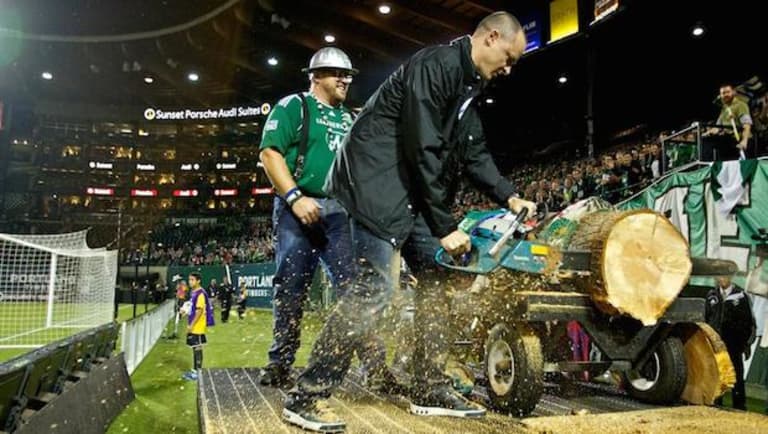
Merritt Paulson helps Timber Joey cut a celebratory log slice at Providence Park | USA Today Sports Images
The initial vote to approve the framework of the deal passed by a tight 3-2 margin, before the formal arrangement subsequently moved forward on a 4-1 vote. And believe it or not, clinching an MLS expansion invite wasn’t quite a slam dunk, either.
“[MLS] had real reservations,” said Paulson. “Seattle had come in in 2009 and they were certain that Vancouver was going to get one of the 2011 bids, and they had concerns with doing too many teams in the Pacific Northwest. So we had work to do there as well.”
Key to winning over both MLS and the city council in the first place, the Timbers Army have been even more instrumental in creating the modern Providence Park experience. Having built an impressive, and organic, supporter culture while the team toiled in the lower divisions, the TA, led in more recent times by its 107IST (Independent Supporters Trust), have worked closely – if not always completely harmoniously – with the front office to foster cherished traditions and carry them forward.
“They’re one of the real strengths of the overall organism of the Portland Timbers,” said Paulson, “and they speak with one voice.”
While their previous incarnations played under different ownership, in different leagues and in markedly different eras, the common thread of the Timbers name, and their historic home, made gamedays the stuff of Stumptown lore, with figures of the past like Clive Charles celebrated almost as often as present stars like Diego Valeri.
“It definitely helped the modern version of the Timbers to be renamed after the NASL and APSL teams and to play in the exact same building,” said Orr. “Institutional knowledge and generational fandom are definitely buoyed when parents can take kids to a game and say ‘this is where we sat when we were your age,’ rather than trying to explain how some other team from some other league in some other time played at some other place that may or may not still exist.
“The continuity of place, for whatever the reasons it never changed, injects everything with a level of sameness that's all but impossible in American soccer terms.”
Orr also credits PTFC’s innovative marketing campaign ahead of their expansion season, centered around fans rather than players, for helping link the club to its fellow citizens.
“Everyone knows it and remembers it, thanks to that lumberjack photo shoot all the fans waited in line to be a part of,” he noted. “Instead of images of soccer players new fans have never heard of or don't recognize, it was their neighbor or their cousin or whatever. Made it seem family-oriented, approachable, but also edgy, given all the axes and chainsaws!”
As comic-book writer/novelist and Timbers diehard Greg Rucka recently noted in a moving post on Timbers.com, in year one it was relatively easy to buy season tickets; the waiting list has since grown to some 15,000 people. Many of the new sections on the east side are suites and other high-end offerings, helping to subsidize low prices for the TA’s general-admission sections and providing more seating options for fans and families of various ages and outlooks.
Beyond additional capacity and revenue, the new roof should also help keep sound in, and expansion architect (and Timbers fan) Brad Cloepfil has noted with satisfaction that the east side stand resembles the original 1926 design plan that was never brought to completion:
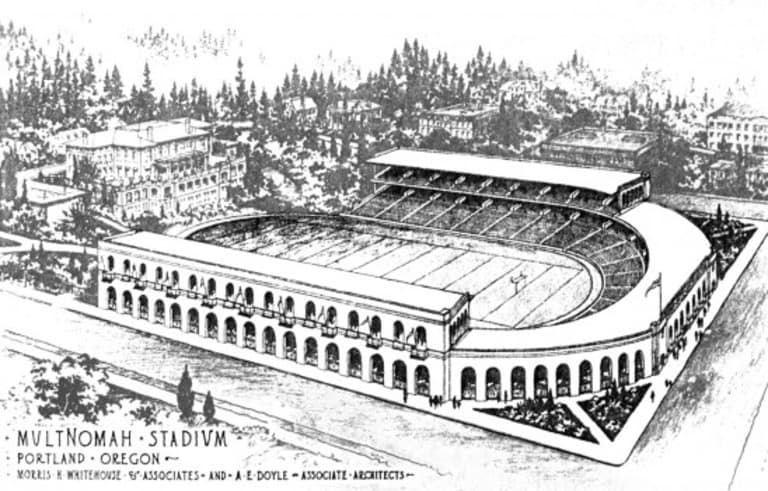
The original design plan for Providence Park (then Multnomah Stadium) in 1926 | Portland Timbers
For Portland, Saturday’s match will be both a journey into the future and a tribute to the past. It will renew the time-honored rituals that a proud city has raised generations of its children on. And perhaps most importantly, it will provide the Timbers with an even more ferocious home-field advantage than ever before.
“You never know until we actually put the lights on and put the team on the field and fill this thing up how it’s going to live and breathe and sound – I think it’s going to be loud as hell,” said Paulson. “It was already loud. But with the sunken bowl and this many bodies here and the electricity that already exists with our fans, I think it’s going to remind people of why we have the best atmosphere in the league. And it’s going to go to another level.
“There’s some good atmospheres in the league. You’re hearing a lot about LAFC, and what they’ve built is great, and Atlanta. But there’s only one Portland.”

